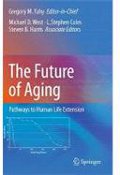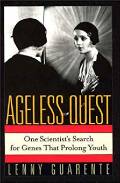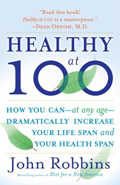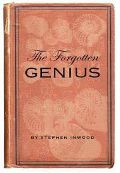Norman Sharpless and Ronald Pinho Propose the Stem-Cell Theory of Aging
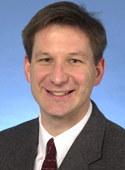 Who:Norman E. Sharpless, Ronald A. DePinho
Who:Norman E. Sharpless, Ronald A. DePinhoWhen:January 01, 2004
Methods: By citing past evidence their reasoning follows that a cell with genomic instability will either undergo senescence/apoptosis, or proliferate into cancer, depending on the integrity and ability of various cell cycle check points.
Institution: UNC Chapel Hill
Where: Chapel Hill, North Carolina, U.S.A
Citing past research Norman Sharpless out of UNC Chapel Hill, and Ronald Pinho out of Harvard Medical propose that aging occurs due to a decline in restorative capacity of tissue stem cells. The restorative capacity is hindered due to a trade-off between tumor suppression and senescence, via telomeres, p53-ARF, and P16INK4a-Rb.
Their reasoning follows that a stem cell with genomic instability will either undergo senescence/apoptosis, or proliferate into cancer, depending on the integrity and ability of various cell cycle check points. In their own words:
During crisis, the deprotected telomere ends in proliferating cells can be illegitimately fused through DNA repair mechanisms, ultimately leading to the generation of complex non-reciprocal translocations, a hallmark feature of adult solid tumors. In a tissue stem cell, telomere dysfunction would appear to have two outcomes depending on the integrity of checkpoint mechanisms: respond to checkpoint activation with senescence/apoptosis or proliferate and engender genomic instability. Evidence suggests that most cells facing this decision respond to checkpoints, producing a progressive diminution of stem cell reserve throughout the human lifespan. This decline in tissue regeneration capacity eventually manifests as aging. The rare cells that continue to proliferate in the setting of telomere dysfunction and emerge from crisis having accumulated additional, transforming mutations are equally problematic from the organismal perspective. These cells necessarily have incurred proliferative genetic lesions and inactivated tumor suppressor checkpoints, and appear well on their way down the path to full-fledged cancer.
Interestingly, the paper cites evidence that humans missing the AT tumor suppressor (ATM) (ataxiatelangiectasia mutated kinase), which functions in DNA damage signaling, develop a progeroid syndrome (early aging syndrome).2,3 This result strengthens the cancer/aging trade-off theory.
Evidence against the theory is seen in studies that do not find increased p53 expression or telomere shortening in aging tissue, which suggests causes for aging that are independent of tumor suppression.4,5,6 However, another explanation is that the tumor suppression/aging trade off only occurs in stem cells, a relatively small portion of cells in most tissues, and is thus, not detectable.
The paper concludes suggesting that P16INK4a, p53, and telomere shortening can create useful biomarkers so medical professionals can make recommendations on lifestyle choices which can slow aging and reduce risk of cancer. As of 2009 P16INK4a has been found as a reliable biomarker of aging for a wide variety of human tissues.7
References
- Sharpless N.E., DePinho, R. A. Telomeres, stem cells, senescence, and cancer. J. Clin. Invest. 113:160?168 (2004). doi:10.1172/JCI200420761.
- Chang, S., Khoo, C.M., Naylor, M.L., Maser, R.S., and DePinho, R.A. 2003. Telomere-based crisis: functional differences between telomerase activation and ALT in tumor progression. Genes Dev. 17:88?100.
- Metcalfe, J.A., et al. 1996. Accelerated telomere shortening in ataxia telangiectasia. Nat. Genet. 13:350?353.
- Hastie, N.D., et al. 1990. Telomere reduction in human colorectal carcinoma and with ageing. Nature. 346:866?868.
- Allsopp, R.C., et al. 1992. Telomere length predicts replicative capacity of human fibroblasts. Proc. Natl. Acad. Sci. U. S. A. 89:10114?10118.
- Frenck, R.W., Jr., Blackburn, E.H., and Shannon, K.M. 1998. The rate of telomere sequence loss in human leukocytes varies with age. Proc. Natl. Acad. Sci. U. S. A. 95:5607?5610.
- Liu, Y., Sanoff, H., Cho, H., Burd, C., Torrice, C., Ibrahim, J., Thomas, N., & Sharpless, N. (2009). Expression of p16INK4a in peripheral blood T-cells is a biomarker of human aging Aging Cell DOI: 10.1111/j.1474-9726.2009.00489.x
Links

